Australian Tropical Rainforest Plants - Online edition
Omphalea queenslandiae F.M.Bailey
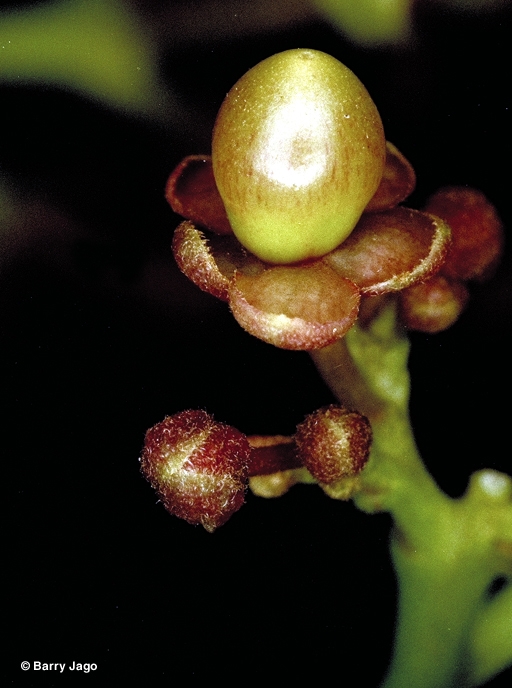

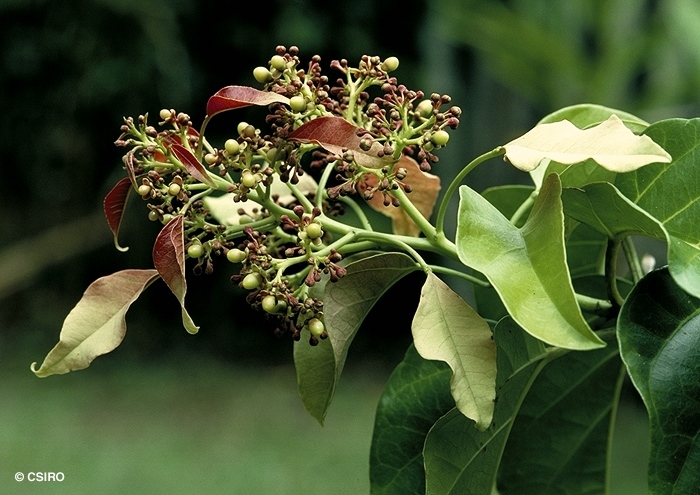
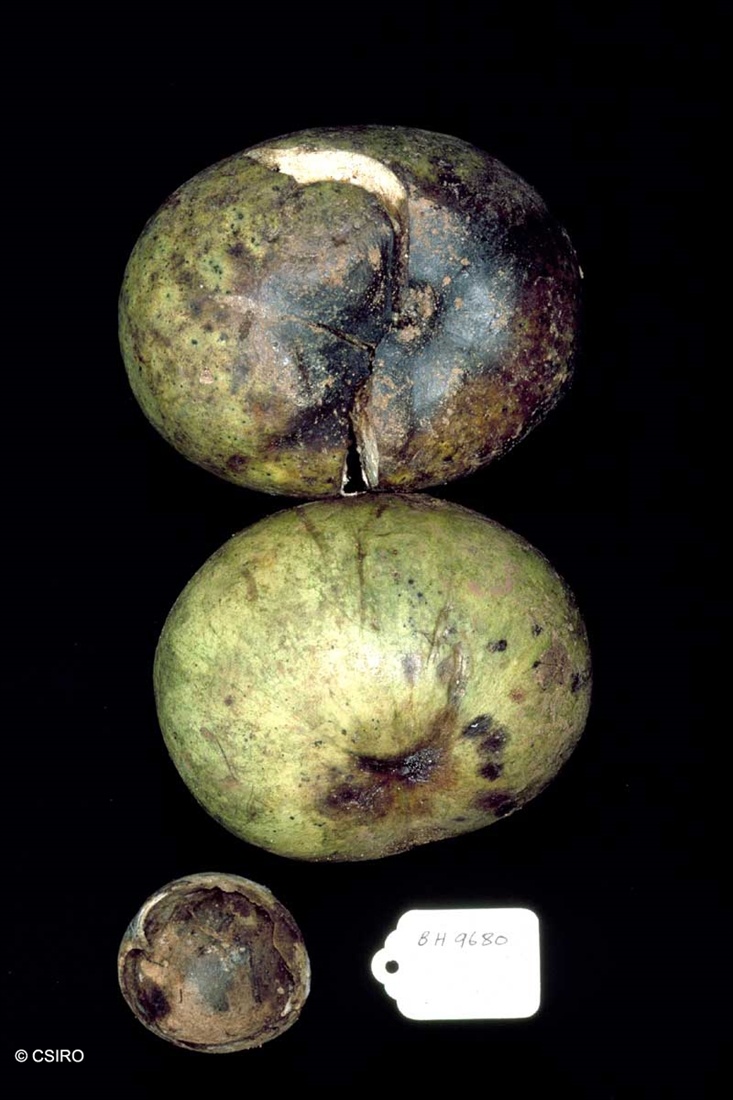
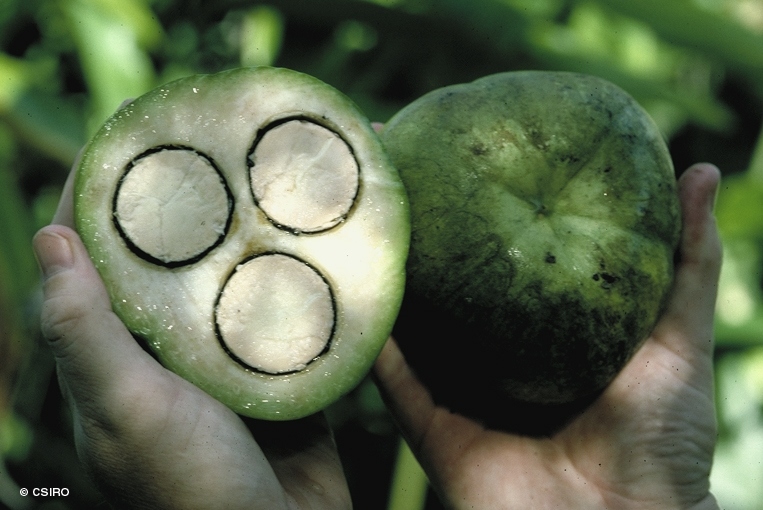
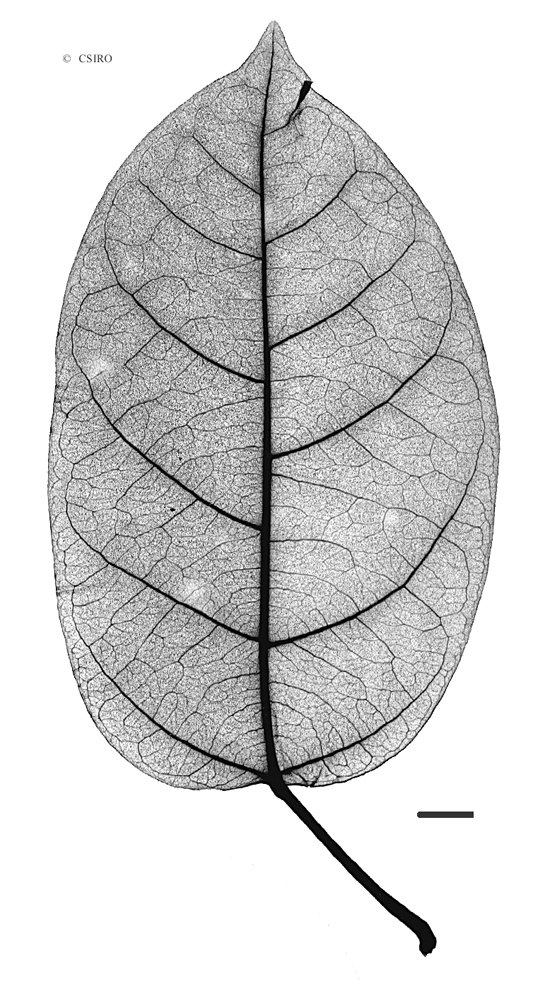
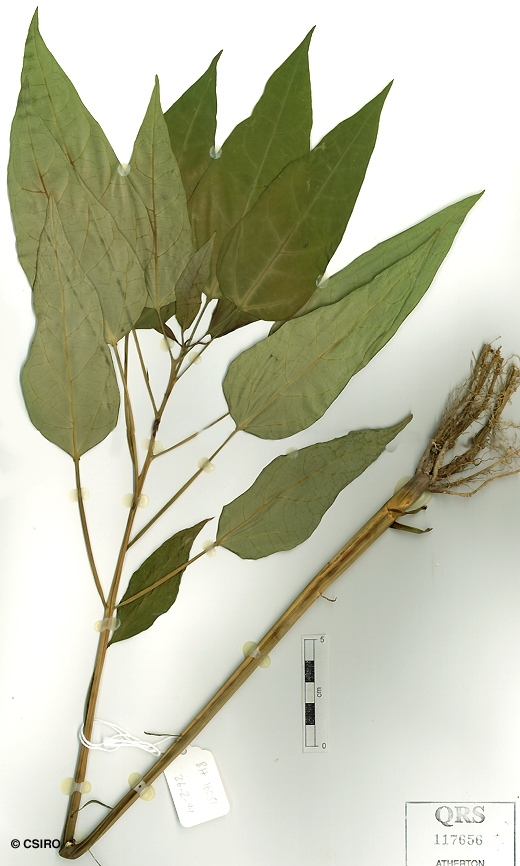
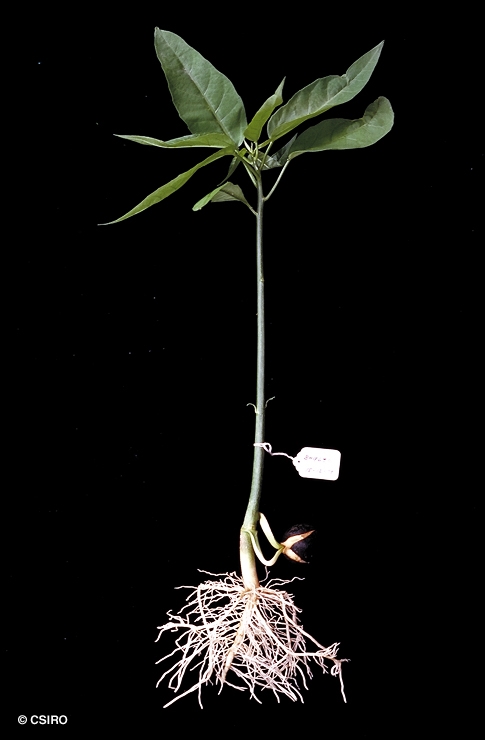
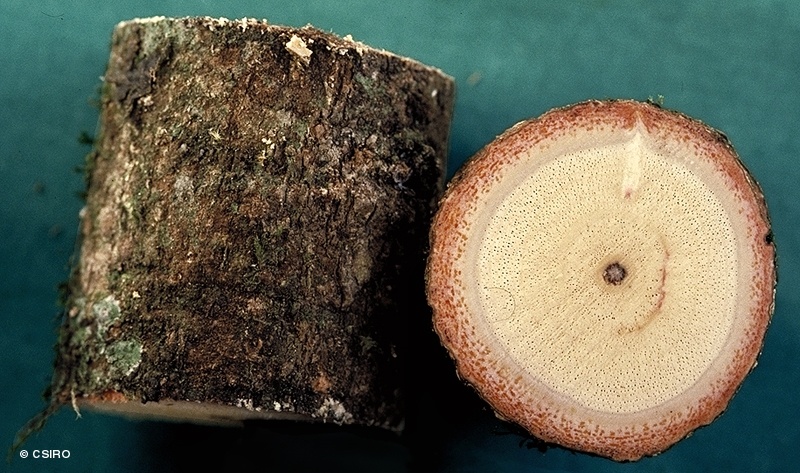
Bailey, F.M. (1889) Botany of the Bellenden-Ker Expedition (in Meston: Report of the Government Scientific Expedition to Bellenden-Ker Range) : 58. Type: received some years ago from Dr. Thos. L. Bancroft, when that gentleman was on the Johnstone River ..
Omphalea
Twig exudate clear, turning dark when it dries. Stipules triangular, about 1-2 mm long. Leaf blades about 12-22 x 6.5-12 cm, petioles about 2.5-5 cm long. Two large flat glands usually visible on the upper surface of the petiole close to its junction with the leaf blade. Tendrils stout, branched with up to 10 or more short, often coiled lateral branches.
Male flowers: Flowers do not open widely and are smaller than the female flowers. Tepals uniform in size, about 2 mm long, thick and fleshy, concave on the inner surface. Stamens fused to form a column about 1.5 mm long. Disk glands 5, thick and fleshy, each about 1 mm long and slightly shorter than the staminal column. Female flowers: Flowers about 5-10 mm diam. Tepals variable in size, about 2-4.5 mm long, thick and fleshy, concave on the inner surface. Ovary swollen and enlarged, ellipsoidal, about 7 mm long. Stigmas inserted in an apical cavity in the style. Ovules 1 per locule.
Fruits depressed globular, about 7.5-8 x 9.5-12.5 cm, mostly 3-lobed or 3-locular producing a clear sticky exudate when cut. Seeds globular, about 3.5-4 cm diam. Cotyledons broad and flat, somewhat contorted, about 3 x 3 cm. Radicle about 2-3 mm long.
About 6 cataphylls produced before the first pair of true leaves. Cataphylls about 15-20 mm long. First true leaf blades broadly lanceolate. Two large rounded glands present near the apex, one on each side of the petiole near its junction with the leaf blade. At the tenth leaf stage: leaf blade glabrous, broadly lanceolate, apex acute, base obtuse, margin +/- entire but often sinuate. Midrib raised on the upper surface of the leaf blade. Stems and petioles produce a clear exudate. Stipules gland-like, about 1 mm long. Two raised glands present, one on each side of the petiole near its junction with the leaf blade. Seed germination time 146 days.
This species sometimes produces quite large seed crops and the ripe seeds can be picked up in quantity from the forest floor. The flesh in the seeds tastes quite pleasant but almost all people eating it report quite startling gastric consequences.





